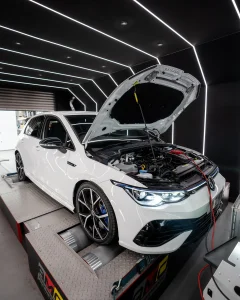Owning a performance car is an exhilarating experience. Whether you’re behind the wheel of a sleek sports car, a powerful muscle car, or a high-end luxury vehicle, driving these beauties can make you feel on top of the world. However, with this thrill comes the responsibility of finding the right insurance. Performance car insurance can be a bit more complex than regular auto insurance, but with the right approach, you can get the coverage you need at a price that suits your budget.
Understanding Performance Car Insurance
Before diving into the process, it’s essential to understand what performance car insurance is and why it differs from standard car insurance. Performance car insurance is designed for high-performance cars with high horsepower and speed capabilities. These cars often have higher repair costs and can be more expensive to insure because of their higher risk profiles.
Key Features of Performance Car Insurance:
- High Coverage Limits: Due to the high value and repair costs of performance cars, insurance policies typically offer higher coverage limits.
- Specialised Coverage Options: Coverage can include things like modified cars or track-day insurance.
- Higher Premiums: Because performance cars are more expensive to repair and often driven more aggressively, premiums can be higher.
- Insurance Groups: Performance cars typically fall into the highest insurance groups due to their speed, repair costs, and likelihood of being stolen. Insurance groups are determined by a panel that considers various metrics related to car performance and repair expenses, which ultimately affect insurance premiums.
Step 1: Assess Your Needs
The first step in getting performance car insurance is to assess your specific needs. Consider the following factors:
- Car Model and Value: The make and model of your car will significantly impact your insurance premium. High-end sports cars and luxury vehicles typically cost more to insure due to their high repair and replacement costs.
- Usage: How often do you drive your performance car? If it’s a daily driver, you might need different coverage compared to a car that’s only driven on weekends or special occasions.
- Modifications: Have you made any modifications to your car? Performance enhancements or custom parts may require additional coverage.
- Driving History: Your driving record plays a crucial role in determining your premium. A clean driving record will generally help lower your insurance costs. Additionally, high-performance cars often result in more frequent insurance claims due to their powerful engines, which increase the likelihood of accidents. These vehicles also face higher risks of vandalism and theft, contributing to their elevated insurance premiums.
Step 2: Shop Around
Once you have a clear understanding of your needs, it’s time to start shopping for insurance. Here’s how to approach this step:
- Compare Multiple Quotes: Don’t settle for the first quote you receive. Get quotes from several insurance providers to compare coverage options and prices. Many insurance companies offer online tools to help you get quotes quickly.
- Look for Specialist Insurers: Some insurance companies specialise in performance and luxury cars. These insurers are more familiar with the unique needs of performance vehicles and may offer better coverage options and pricing.
- Work with a Specialist Insurance Broker: A specialist insurance broker has extensive experience in sports car insurance. They understand the unique needs of insuring high-performance vehicles and can offer tailored insurance solutions. Their expertise and personal commitment can help you find the best coverage for your car.
- Check Reviews and Ratings: Research the insurers you’re considering. Look at customer reviews and ratings to ensure they have a good track record for customer service and claims handling.
- Ask About Discounts: Inquire about any discounts you might be eligible for. Some insurers offer discounts for things like having anti-theft devices installed or completing a defensive driving course.
Step 3: Choose the Right Coverage
Selecting the right coverage is crucial for protecting your performance car. Here are some types of coverage you should consider:
- Collision Coverage: This covers damage to your car resulting from a collision, regardless of who’s at fault. It’s especially important for performance cars, which can be more expensive to repair.
- Comprehensive Coverage: This protects your car from damage caused by non-collision incidents, like theft, vandalism, or natural disasters.
- Liability Coverage: This pays for damage you cause to other vehicles or property, as well as medical costs for others if you’re at fault in an accident.
- Uninsured/Underinsured Motorist Coverage: This helps if you’re in an accident with a driver who doesn’t have enough insurance to cover the damage.
- Medical Payments Coverage: This covers medical expenses for you and your passengers after an accident, no matter who is at fault.
- Custom Parts and Equipment Coverage: If you’ve made modifications to your performance car, this coverage helps protect those custom parts.
- Specialist Car Insurance: High-performance vehicles like Ferraris, Teslas, or Aston Martins are considered a higher risk due to their design and potential for theft. Standard insurance may not adequately cover the unique needs and higher costs associated with insuring these vehicles. Specialist car insurance is essential to ensure comprehensive protection for your high-performance car.
Step 4: Review the Policy Terms
Before finalising your insurance policy, make sure to thoroughly review the terms. Here’s what to look out for:
- Deductibles: Understand the deductibles for different types of coverage. Higher deductibles can lower your premium but mean you’ll pay more out of pocket in the event of a claim.
- Exclusions: Check for any exclusions or limitations in the policy. Some policies might exclude certain types of damage or modifications.
- Limits of Coverage: Ensure that the coverage limits are sufficient for your vehicle’s value and repair costs.
- Claim Process: Familiarise yourself with the insurer’s claims process. A smooth and efficient claims process can make a big difference if you need to file a claim. For high-performance cars, understanding the insurance claim process is crucial due to the higher likelihood of claims. Factors such as higher speed capabilities, greater risk of theft, and expensive repairs contribute to this increased likelihood.
Step 5: Finalise and Purchase the Policy with a Specialist Insurance Broker
Once you’ve reviewed and chosen the best policy for your performance car, it’s time to finalise and purchase the insurance. Here’s what to do:
- Provide Necessary Information: You’ll need to provide details about your car, driving history, and any modifications. Be accurate and thorough to avoid issues with your coverage.
- Ask Questions: If you have any questions or concerns, don’t hesitate to ask the insurance provider. Make sure you fully understand the policy before you sign.
- Make the Payment: Choose your payment plan and make the initial payment. Many insurers offer flexible payment options, including monthly or annual payments.
- Get Proof of Insurance: Once your policy is active, you’ll receive proof of insurance. Keep this documentation in your vehicle and ensure it’s up to date.
Additional Tips to Reduce the Cost for Performance Car Owners
- Track Your Mileage: If you drive your performance car less frequently, some insurers offer low-mileage discounts.
- Consider a Higher Deductible: If you’re comfortable with a higher deductible, you might be able to lower your premium.
- Secure Your Vehicle: Installing security features like an alarm system or tracking device can sometimes reduce your insurance costs.
- Take an Advanced Driving Course: Enrolling in an advanced driving course can demonstrate your commitment to safe driving to insurers. This can be particularly beneficial for young drivers, as it may lead to lower insurance premiums, especially for performance cars.
Getting performance car insurance doesn’t have to be a daunting task. By understanding your needs, shopping around, and selecting the right coverage, you can protect your high-performance vehicle and enjoy the thrill of the drive with peace of mind. Remember to review your policy periodically and make adjustments as needed to ensure you always have the best coverage for your performance car.



